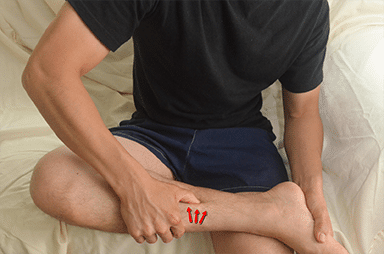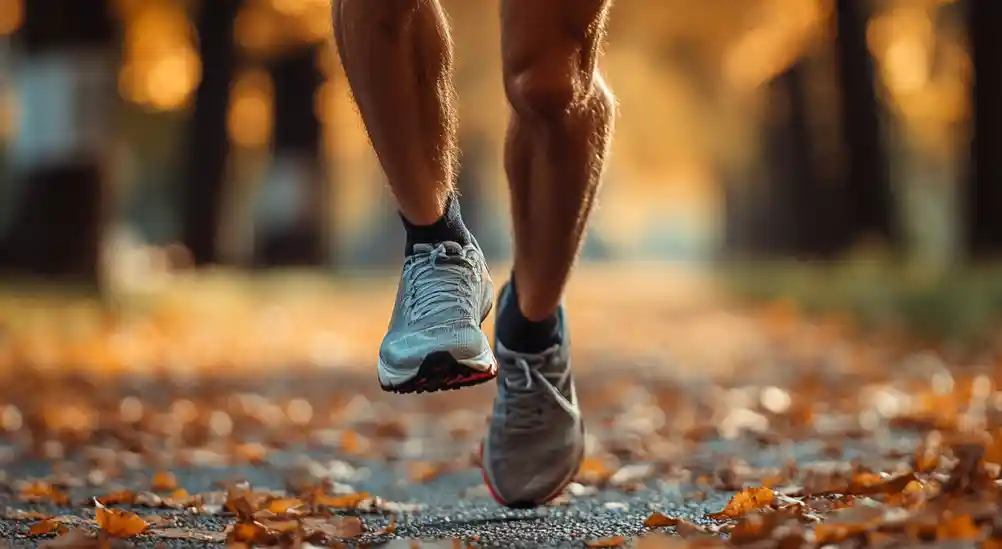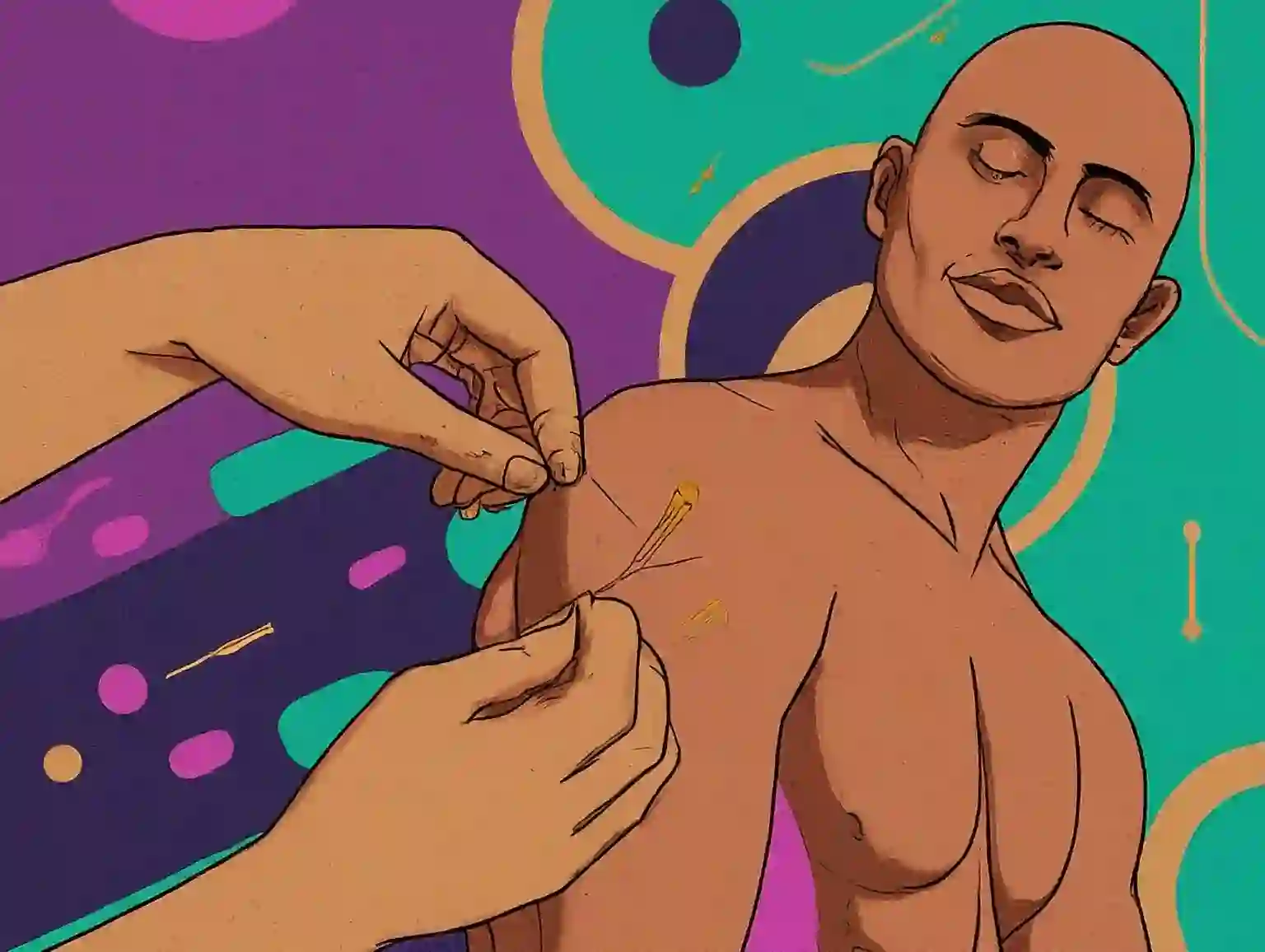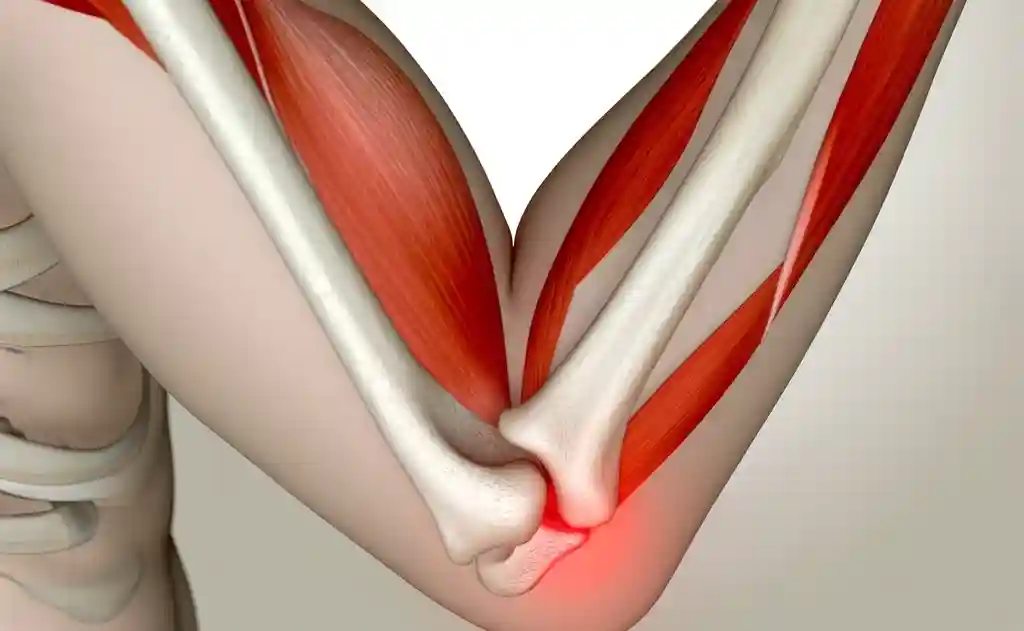5 Plantar Fasciitis Exercises: How Plantar Fasciitis Exercises Can Help My Pain

Experiencing heel or sole pain as soon as you step out of bed? Notice it improving slightly after moving around? Or perhaps you’re dealing with the discomfort of heel spurs. If these scenarios sound familiar, you might be suffering from plantar fasciitis. If so try the plantar fasciitis exercises below.
In this comprehensive guide, we delve into 5 plantar fasciitis exercises recommended by health experts. These simple, at-home exercises are designed to alleviate pain, improve foot health, and potentially speed up your recovery from plantar fasciitis. Whether you’re just starting your day or looking to ease discomfort after long periods of rest, these exercises could be your first step towards relief.
Plantar Fasciitis? What Is It?
The plantar fascia is a sheet of connective tissue similar to a ligament or tendon. Spanning the arch of the foot, it stretches from heel to toe. Fasciitis means inflammation of the fascia, but research found that there is no inflammation.
SEE ALSO: 6 Things You Should Look For In A Chiropractic Clinic
Then what is happening? The Plantar Fascia tissue is simply degenerating, which doesn’t sound promising. The good news is that plantar fasciitis exercises shown below have helped many people.
Shockwave therapy may also be helpful. A lot of people also ask about orthotics.
Do I Need Orthotics?
If, after trying the self-treatment, you are not progressing, then you should get professional treatment, and possibly orthotics.
Do I Have to Stop Standing?
No, you don’t need to stop standing. Chances are, if you are standing all day, you can do two things to help yourself.
If your job requires you to stand, for long periods, in one place, buy yourself a rubberized doormat. The rubber from the mat will cushion your feet as you stand and do your work. You might also want to buy a cushioned insert that fits just the heel in your shoe as a temporary measure.
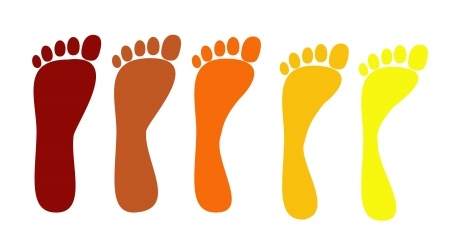
If your job involves walking, you can switch into shoes with a higher heel. (2inches/ 4-5cm) The higher heel will lower the pressure on the heel and plantar fascia. Your Plantar Fasciitis will like you.
Men can do this too. No, you don’t need to purchase women’s shoes, guys. I was just saying if you happen to have higher-heeled men’s shoes or boots these may help.
There are all kinds of shoes with higher heels, but it is the difference in height, between the toe and heel, that provides relief.
You don’t need to buy new shoes though, this advice is for those who happen to have higher-heeled shoes available, but this does call for a warning.
Warning!
Don’t wear shoes with higher heels permanently in place of doing the plantar fasciitis exercises or getting professional help. The pressure relieved from the heel and arch does put a lot of pressure on the big toe and will cause permanent damage.
See Also: 5 Ways To Get Rid Of Heel Spurs & Plantar Fasciitis
The recommendation is for temporarily wearing shoes with a higher heel, just wear them until the plantar fasciitis exercises start to help.
Yes, many times the higher-heeled shoe will be more comfortable than a running shoe.
Do I Have to Stop Running?
No! You will need to stop speed work and hill training. If you are still getting worse or not improving after two weeks of plantar fasciitis exercises, stop running and start cycling to exercise the legs and to keep up your cardio.
If you have a more serious case then – YES – you do have to stop running and immediately start the plantar fasciitis exercises outlined below. Having run the Toronto Marathon a couple of times, I know what it feels like to have to stop because I have been there. Trust me on this, I do know what it’s like.
Everybody should do all the Following Plantar Fasciitis Exercises except exercise #3, which is for people with Plantar Fasciitis who have hip problems/lower back Problems. Surprisingly many people, with no hip or lower back symptoms can sometimes still be helped with their plantar fasciitis with this exercise.
Plantar Fasciitis Exercise #1: Treat Your Shin Muscles
If the muscles at the front of your shin called dorsiflexors are tight, they prevent you from absorbing shock. If the dorsiflexors can’t relax properly, your foot won’t come down gently it just slaps down onto the ground. This is a contributing factor to getting Plantar Fasciitis.
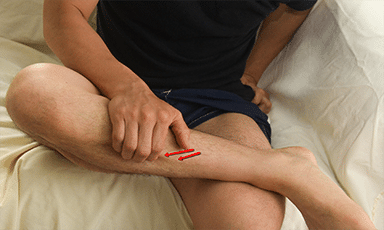
Here’s How to treat your Shin Muscle:
- Sit down and cross the bad foot over your other knee
- Find your shin bone (tibia bone). Knock on your bone to find it.
- Just beneath the shin bone is a muscle. It’s called the Tibialis Anterior.
- Curl your fingers underneath the shinbone and push up. Reinforce with the other hand.
- You should feel a deep ache. Hold for 5 seconds
- Start at the top of the shin bone and go all the way down
Plantar Fasciitis Exercise #2: Treat Your Deep Calf Muscles
Your deep calf muscles (Flexor Digitorum Longus, Tibialis Posterior) extend right into the sole of your foot.
Such tight deep calf muscles change how stable your foot is and alter how you walk. If these muscles don’t work right, they contribute to Plantar fascitis.
See Also: Do You Need Orthotics – Orthotics Guide
Such tight deep calf muscles affect the stability of your foot and alters how you walk. If these muscles don’t work properly, they also contribute to getting Plantar Fasiitis.
Here’s How to Treat Your Deep Calf Muscle – Very similar to the Shin Muscle Treatment.
- Sit down and cross the bad foot over your other knee
- Find your shinbone (tibia bone).
- Just above the shinbone is a muscle. It’s called the Flexor Digitorum Longus
- From the shinbone, slide your thumb toward your body (or above) until you fall onto the muscle. Reinforce with the other hand.
- You should feel a deep ache. Hold for 5 seconds
- Start at the top of the shinbone, and go all the way down.
Plantar Fasciitis Exercise #3: Treat Your Hip Rotators – External Rotators
Even the hips are often part of the problem. Tight hip rotators make your foot turn out putting more pressure on the knee, and thus putting more pressure on your foot, making your plantar fasciitis worse.
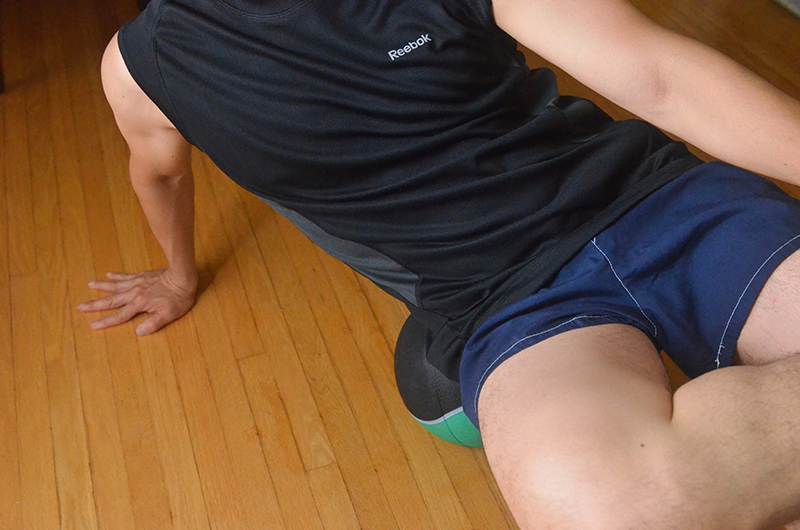
Here’s How to treat your Hip Rotators
- Cross your bad side leg over the other knee
- Get a tennis ball, basketball or a medicine ball and sit on it. ( Medicine ball in the picture above)
- To treat the hip rotators go lean at about a 45-degree angle.
- Stop at each tender point and hold until each one is ironed out or feels less tender.
- Now work your way up from just beside your tailbone, go back to the centre, and work your way outwards away from the centre.
- Treat your whole butt except for the bones.
See Also: Custom Orthotics: Caution When Getting Custom Orthotics
Plantar Fasciitis Exercise #4: Plantar Fascia Release
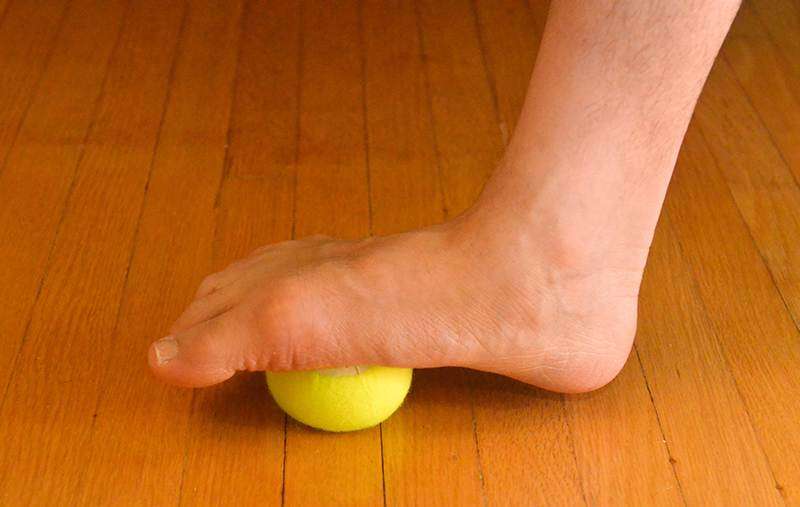
Plantar Fascia Release with your Hands
- Cross the bad side leg over the other knee
- Pull your first three toes backwards and forward in a repetitive fashion
- Take your other hand, when your toe is backwards run your thumb along the fascia with firm, and hard, pressure.
- Work the whole foot from the heel to the balls of the feet.
- Find a tennis ball or golf ball then sit on a chair
- Put pressure on the ball, with your feet
- When you find a sore spot stay with the spot until it is ironed out or it feels less tender.
- Work the entire arch area of your foot (medial arch).
Tennis / Golf Ball rolling to decrease adhesions and scar tissue
See Also: Keep The Bunion Surgeon Away With These Bunion Tips
Plantar Fasciitis Exercise #5: Strengthen Your Deep Calf Muscles
Plantar Fasciitis Exercises help by strengthening the deep calf muscles, which research has shown that this helps. You already treated and relaxed your deep calf muscles in Exercise #3. Now you need to strengthen them using heel raises on the stairs. (Do this exercise on the floor first if you are not stable)
- Stand on the bottom step with your heels sticking out.
- Go down as far as you can and go up high as you can onto your toes
- In the beginning, you may need to keep your shoes on if this is too painful.
- Do three sets of 10.
Bonus Plantar Fasciitis Exercise: Plantar Fasciitis Night Splints
A night splint for plantar fasciitis is put around the ankle to keep the plantar fascia stretched. This is to prevent contraction of the foot.
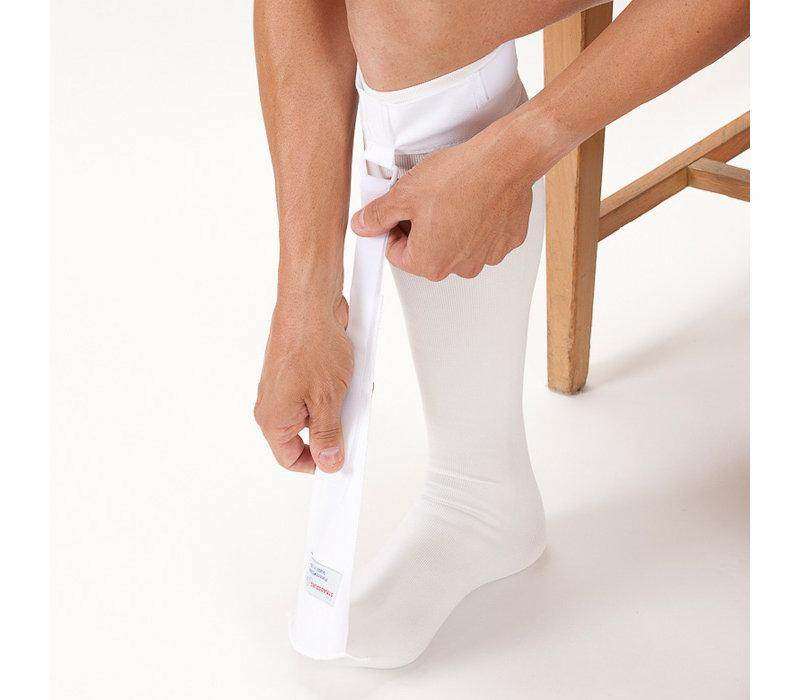
The Strassburg sock is a night splint. When use of it is combined with any of the above treatments, it may accelerate your recovery. Most of us sleep with our feet pointed, which gives the plantar fascia a lot of slack and it will shrink overnight. We take our first step with the foot cold, and it puts enough stress on the fascia to cause more micro-tears. These devices keep the foot flexed at night, which prevents this situation.
Plantar Fasciitis Night Splints can be used in conjunction with plantar fasciitis exercises and with professional treatment.
Taping for Plantar Fasciitis
While taping and kinesotaping will stop your plantar fasciitis from getting worse, it will also prevent you from using your foot muscles. This will atrophy the leg, causing a loss of stability and strength. I don’t recommend taping, especially if you are an athlete. In my opinion, Plantar Fasciitis Exercises are the better choice.
Morning Prevention Routine
- Sit down cross one foot over the other and pull your first three toes backwards. Take your other hand, when your toe is backwards, and run your thumb along the fascia with firm hard pressure. 10X2
- Calf Stretches
- Achilles stretches
At this Toronto chiropractic clinic, we try our best to give you the tools to help you to complement our care.
Tell us what you think in the comments below and like us on Facebook. This Toronto Downtown Chiropractor will answer all questions in the comments section.
